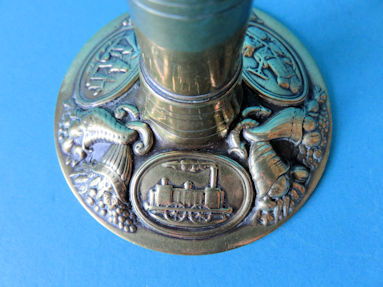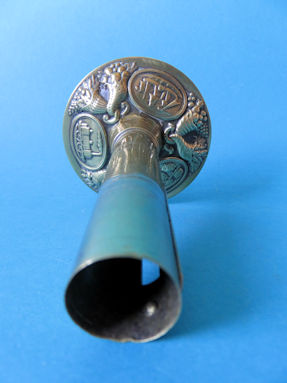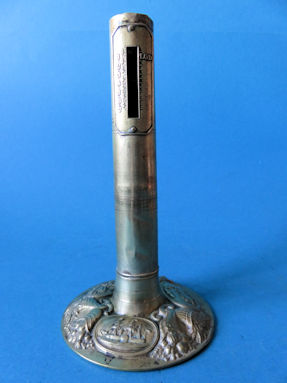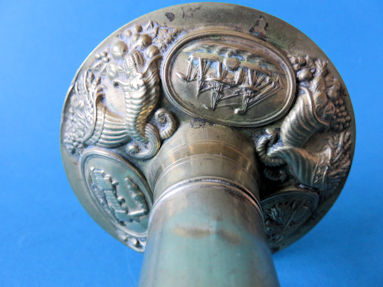These remnants of candlesticks, the typical letter scales originating from England, are interesting. The richly decorated feet are the same in diameter, the images are also identical. In the article Loops of Learning by D.F.Crawforth-Hitchins in Equilibrium 2023 issue No.1, pp. 5036-5044 the model steam locomotive is attributed to Robert Stephenson & Co. and is dated 1831. The four-masted paddle steamer is identified as the Great Western Paddle Steamer of 1837. The third image in a frame shows grain, a shovel, a rake and scythe, a barrel, and some parcels. According to the article the parcel on the right is supposed to say TEA and on more recent examples WOOL. I don't see that on these two examples. It would commemorate the extensive import/export in the English ports. Between the frames are two interlocking horns of plenty, also called cornucopias. The cylinder parts are unequal in diameter, 22.7 and 25.6 millimeters respectively, and unequal in height, 136.3 and 170.0 millimeters respectively.
The smaller copy has an English scale of measure on the left, divided to four ounces per ½ ounce, and on the right the English letter postage rates ½oz 1D, 1oz 2D, 2oz 4D, 3oz 6D, and 4oz 8D. This rate was valid from January 10, 1840 to April 1, 1865. The 4 ounces corresponds to 113.4 grams rounded off.
The larger copy has lines on the left with the numbers 1 to 7 with ½ in between, the lines are also on the right. Opposite the value 1 is the indication LOD and below that a quotation mark for each line. I bought this copy on a Swedish auction site. The Lod is an old Swedish unit of weight equal to rounded 13.3 grams. The 7 Lod then corresponds to 93.1 grams. In Sweden, from 1855 to 1863, domestic mail was weighed in the unit Lod.

remnants of candlesticks



















